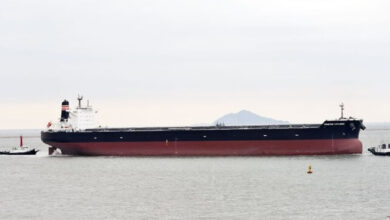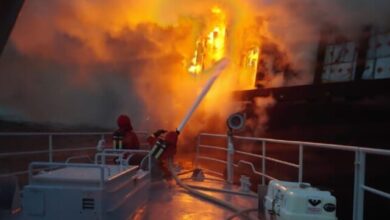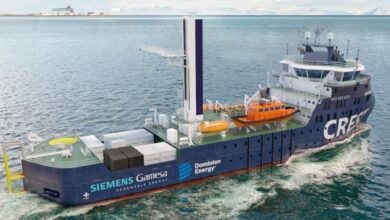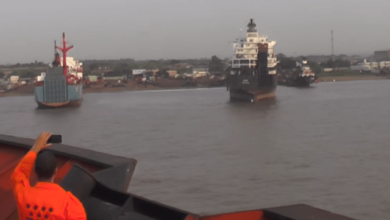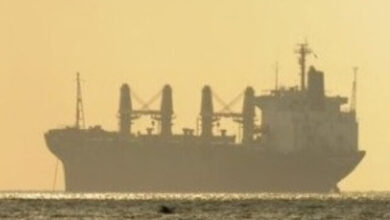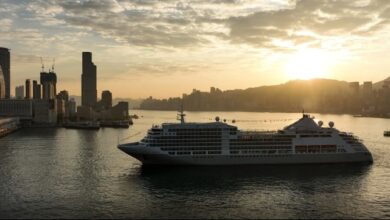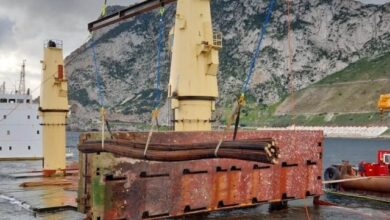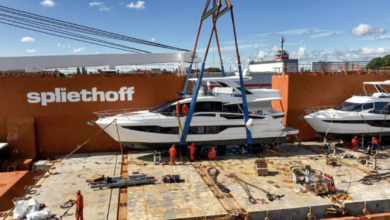Mohamed EL Araby explores : The possibility of living in water as a futuristic adaptation for global warming
Building in water is no longer a luxury but now it is a necessity for the human race to survive this coming disaster





 Since the dawn of civilization and there is an indisputable relationship between human civilization and water bodies. For example, ancient Mesopotamia conquered the Mediterranean with its naval fleet. For ancient Egyptian civilization it was born around and thanks to the river Nile. Adding to these ancient Greece and the most famous legend of Atlantis. And in ancient Rome and its control of water through aqueducts, bathrooms, and fountains. And finally in 18th-century waterfronts which were communities developed to house workers in industrial cities at the height of the industrial revolution such as New York City and San Francisco.
Since the dawn of civilization and there is an indisputable relationship between human civilization and water bodies. For example, ancient Mesopotamia conquered the Mediterranean with its naval fleet. For ancient Egyptian civilization it was born around and thanks to the river Nile. Adding to these ancient Greece and the most famous legend of Atlantis. And in ancient Rome and its control of water through aqueducts, bathrooms, and fountains. And finally in 18th-century waterfronts which were communities developed to house workers in industrial cities at the height of the industrial revolution such as New York City and San Francisco.
The Problem
However these cities are not the only born result of that revolution, there was also a problem that now threats human existence which is global warming. Due to carbon dioxide emissions, the temperature of the Earth has risen in the past years significantly. According to NASA on their “Global Climate Change” Portal they mention that the temperature since the 1880s till now has risen 16.7 0 C. Such temperature difference resulted in the ice glaciers in both north and south pole melting. Also, the same platform mentions that the ice in the poles loses 12.85% of its mass every decade. Now the question is where does this mass go? The answer to that is, unfortunately, our water bodies of oceans, seas, and rivers.
Now, this results in another problem which we are facing nowadays which is the rise in global water levels. According to the same portal, the water levels have risen by (178mm) since the 1880s and not only that but it also increases at the staggering annual rate of (3.3mm). And it does not stop there it is expected to increase by the year 2050
to reach (609mm) higher than it is today. And by the year 2100, this number increases to (1981mm). And these are not even the scariest statistics related to it. According to Nature Magazine, the shoreline globally retreats at the rate of 0.5m annually. We already lost (28,000km2) which is more than the gained landmasses since 1984.
The Solution
As humanity how would we handle such a problem? In my research, there are three ways of dealing with floods. The first one is water exclusion meaning creating a separation between our urban environment and that flood such as creating dams and gates to prevent water from passing through. The problem with this approach at a certain strength of water flows this approach. Hence making resisting this catastrophe futile. Another approach is called water avoidance meaning building our structures away from water bodies. This approach has however its downsides as well. First and for most of the resources on earth are associated with water bodies. The second problem is water keeps crawling in and shorelines retreat. This makes also running away from the problem impossible because at a certain point lands will seize to exist. And for the final currently used strategy to deal with floods, it is called water entry. In this approach, water is allowed to pass in an inhabited area in our buildings that is well isolated from it. The only problem with this approach is the damage it leaves behind.
At this point comes my proposal to overcome the catastrophe at hand. My approach is more of an adapting to that change that will happen very soon. Not by running from it nor trying to fight it. My approach in-fact embraces that catastrophe and going to the water bodies as a shelter for humanity. My proposal is building our cities in water making it for one watertight, and two, not in danger of the floods. Because it is in the source itself. This approach, from research, can be accomplished through three types of structures that were proven to be the most effective in water.
The first one is elevated structures, these structures are built the same way as a jack-up rig on legs that support the area where people move. The second type is the amphibious structures. Meaning the move.
The second type is the amphibious structures. Meaning the structure is on an elevator-like system that moves the structure up and down to deal with the different water levels. Third and the last type is floating Structures this moves up and down with the wave movement and the water levels. This final was proven to be the most effective out of all three of them
Challenges
Such a task is not impossible however multiple challenges come with it. An example of them would the Biofouling of the built structures that threaten its structural integrity. Another one would be Providing Fresh Water in a saltwater environment. In addition to these two, there is the challenge of Providing Food in that environment as well. A fourth challenge in making it a self -sufficient community is Providing Off the Grid Energy. And finally providing a sustainable Waste Management System.
- Biofouling: The choice of antifouling material would be the best way to deal with this point. And now in the marine industry, they use the high-density polyurethane (HDPE) to make the floating docks. As they are resistant impacts with low density (they float). And also they do not need anti-fouling agents making it safe for the environment. On top of all that it is 100% recyclable.
- Providing Fresh Water: This can be done in two ways. The first one extracting the freshwater from the freshwater springs under the sea surface. Another method is through the desalination process. However, the problem with the second method is the waste generated from it, Brine.
- Providing Food: Providing food in seawater is easy however the challenge is in the variety. That is why in addition to fish caught from the sea they need to plant. Hence in my proposal, I have the aquaponic labs which allow the residents to plant vegetables and crops in water without the need for soil and sun as it uses UV light laps to provide light for its growth.
- Providing Off the Grid Energy: For energy, it is advisable to use sustainable sources of energy for the facility to reduce the damage as much as possible. The most fitting ones for our region would be Solar, wind, and hydroelectric. However, I have another suggestion of a battery that is used in floating houses called salt-water batteries as it uses the seawater to generate energy.
- Waste Management System: Finally this can be created through a cycle of resources. As some of the waste can be used as fertilizers in the planting process. And the Brine can be used as the source of concentrated saltwater in generating energy in the saltwater batteries.
Conclusion
Building in water is no longer a luxury but now it is a necessity for the human race to survive this coming disaster. And such a project is not meant to stop the rising of water levels, but it uses the human race’s sharpest weapons which is adaptation and ingenuity. As it will use the latest technology of today to keep that facility functioning as it embraces the catastrophe at hand instead of an attempt of futile resistance.
Mohamed EL Araby
Architecture Student/Teacher’s Assistant
at the American University in Dubai



